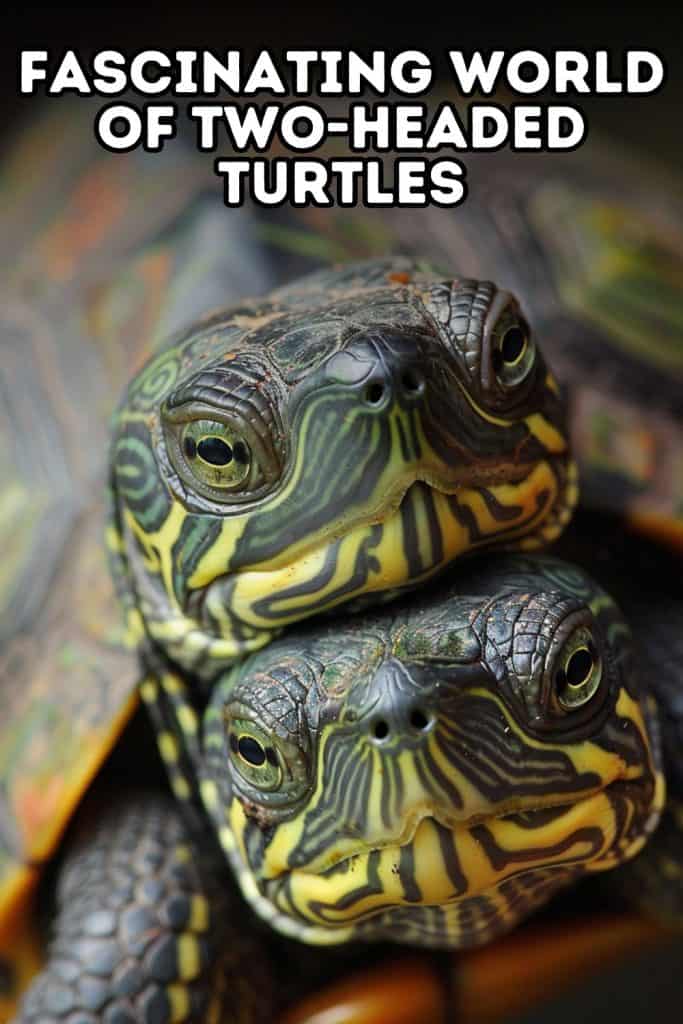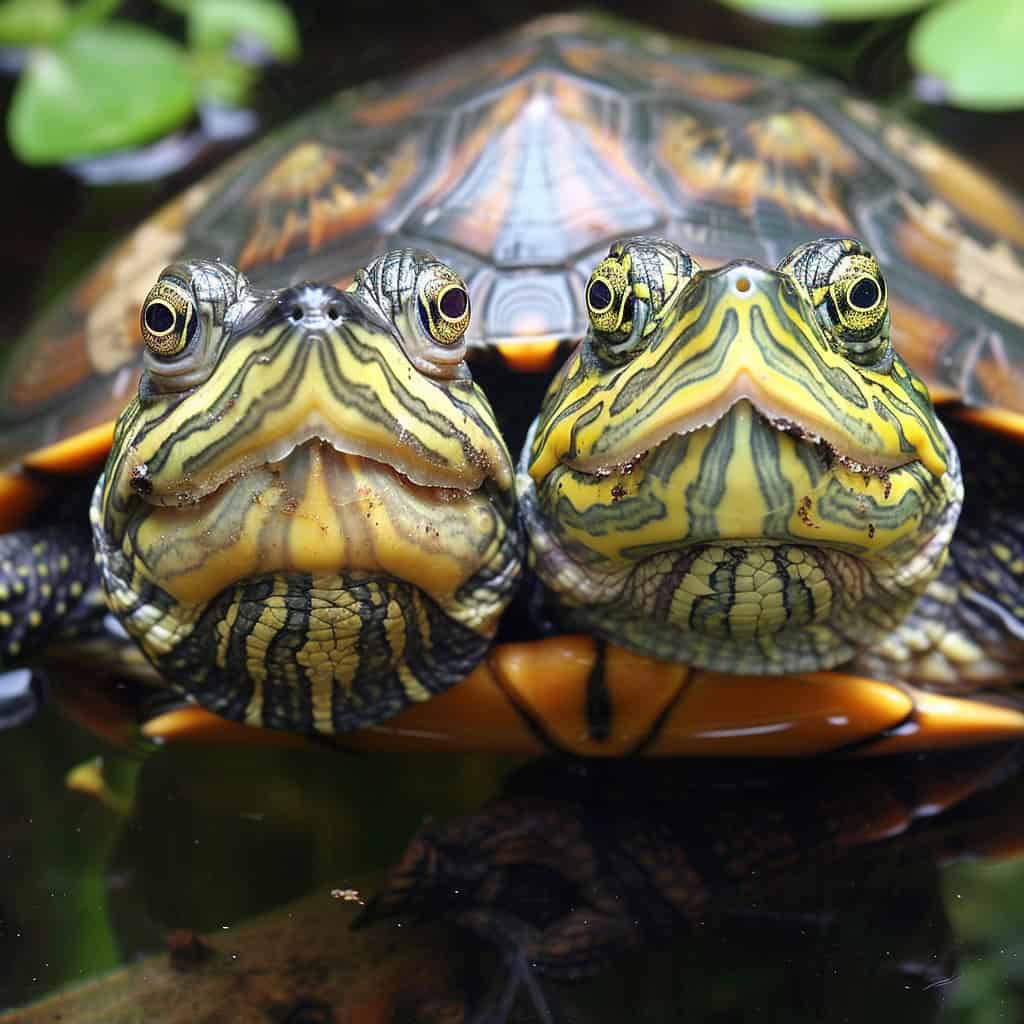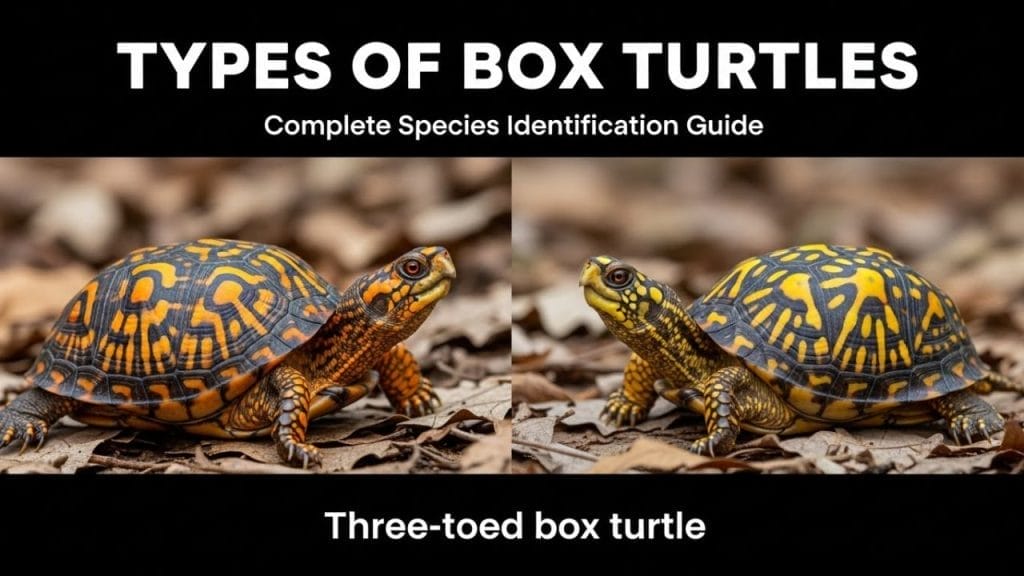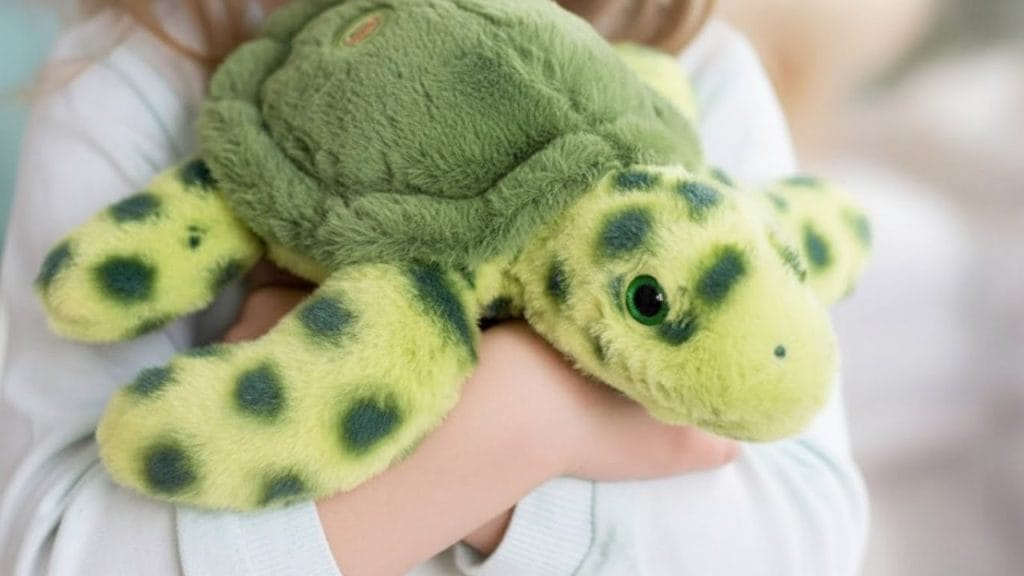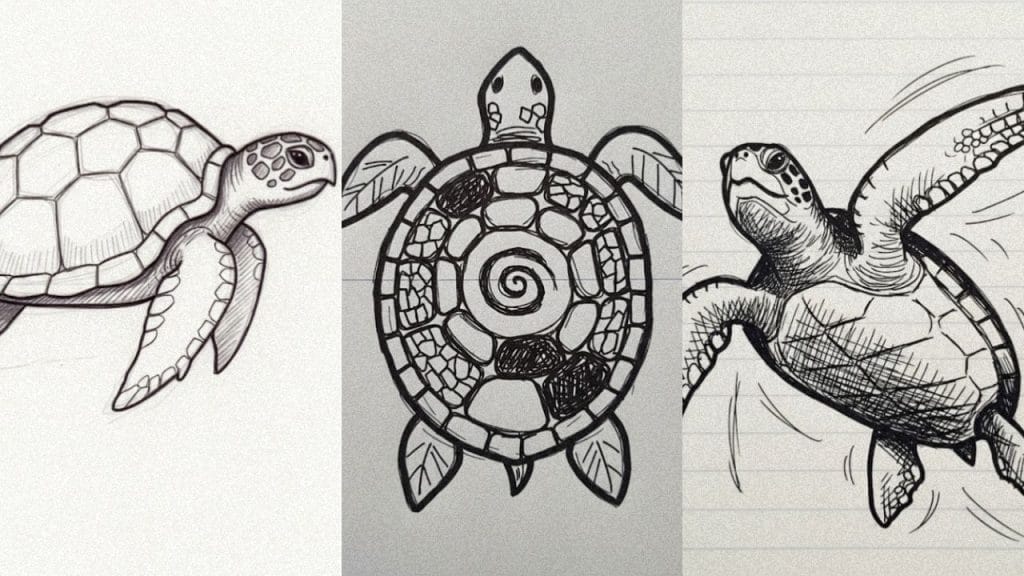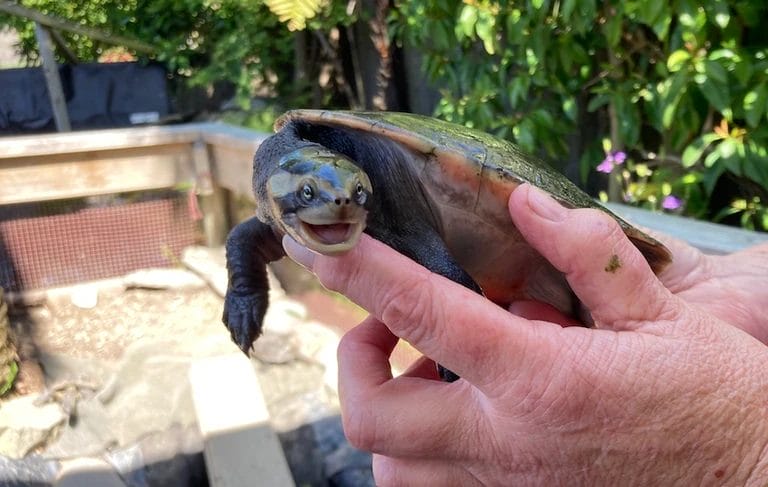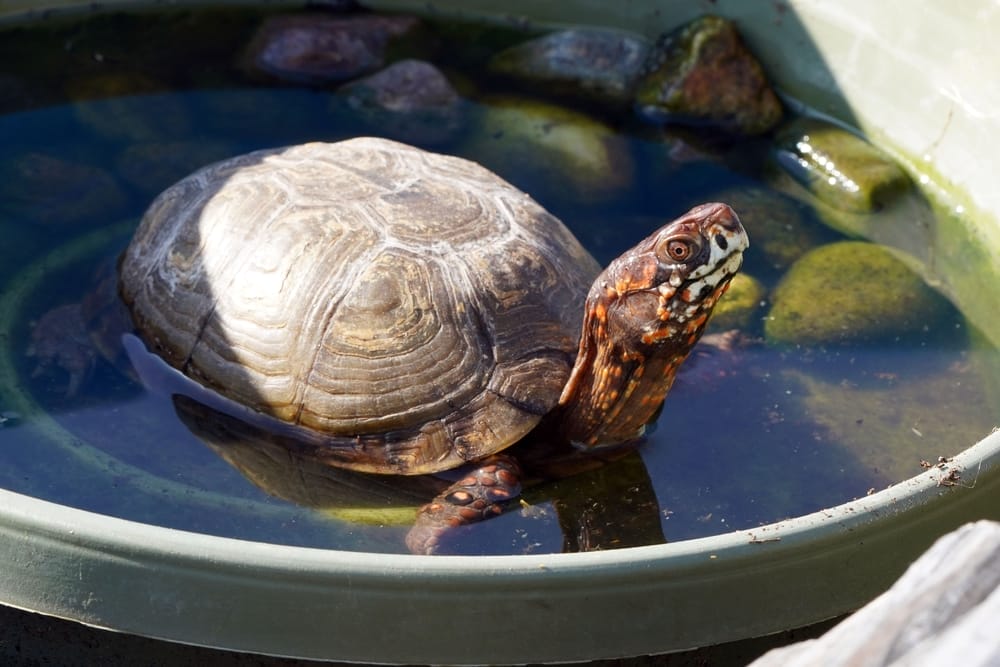The Fascinating World of Two-Headed Turtles

This post was created with help from AI tools and carefully reviewed by a human (Muntaseer Rahman). For more on how we use AI on this site, check out our Editorial Policy.
Imagine stumbling upon a turtle with not one but two heads. It’s a sight that captivates and mystifies, conjuring images of mythical creatures and ancient legends.
This isn’t a scene from a fantasy novel but a real-life phenomenon known as bicephaly, where an animal is born with two heads.
In this blog post, we’ll explore the fascinating world of two-headed turtles. You’ll learn about what causes this rare condition, explore some famous instances of these unique creatures, and understand the challenges they face in their daily lives.
We’ll also examine the scientific research being conducted and the ethical considerations surrounding their care and conservation.
What Are Two-Headed Turtles?
Two-headed turtles are extraordinary reptiles characterized by the presence of two distinct heads on a single body. This rare condition is scientifically known as bicephaly or polycephaly.
Bicephaly refers specifically to the presence of two heads, while polycephaly can denote the presence of more than one head, although more than two heads are extremely rare.
Two-headed turtles are born with two fully or partially formed heads that share a single body. Despite having two heads, they generally possess one set of internal organs, although some may have duplicated organs depending on the degree of their condition.
Why Some Turtles Are Born with Two Heads?
Two-headed turtles, also known as bicephalic turtles, are born with this rare condition due to anomalies during the embryonic development process.
Here’s a deeper look into the primary reasons why this happens:
1. Genetic Mutations
Genetic mutations can play a significant role in the development of two-headed turtles. These mutations may affect the normal process of cell division and differentiation, leading to the formation of two heads.
While most mutations are harmless or neutral, some can result in significant physical changes, such as bicephaly.
2. Embryonic Developmental Errors
During the early stages of embryonic development, errors can occur when the embryo is dividing and differentiating.
Two-headed turtles are often the result of an incomplete embryo splitting, a process similar to the formation of conjoined twins in humans.
This incomplete separation can lead to the development of two heads on a single body.
3. Environmental Factors
Environmental influences can also contribute to the development of two-headed turtles. These factors include:
Temperature Fluctuations:
Turtles are ectothermic, meaning their development is influenced by the temperature of their environment. Abnormal temperature ranges during egg incubation can increase the likelihood of developmental anomalies.
Chemical Exposure:
Exposure to certain chemicals or toxins, such as pollutants in the water, can interfere with normal embryonic development and lead to physical deformities, including bicephaly.
4. Inbreeding
In some populations, a lack of genetic diversity due to inbreeding can increase the chances of genetic anomalies. When turtles mate with close relatives, the probability of recessive genetic mutations, which can cause developmental issues like bicephaly, rises.
5. Natural Occurrence
Sometimes, bicephaly occurs simply as a natural, albeit rare, variation. Just as humans and other animals can be born with congenital anomalies, turtles can occasionally develop two heads without any identifiable external cause.
This Hilarious Turtle Book Might Know Your Pet Better Than You Do
Let’s be real—most turtle care guides feel like reading a textbook written by a sleep-deprived zookeeper.
This one’s not that.
Told from the snarky point of view of a grumpy, judgmental turtle, 21 Turtle Truths You’ll Never Read in a Care Guide is packed with sarcasm, sass, and surprisingly useful insights.
And hey—you don’t have to commit to the whole thing just yet.
Grab 2 free truths from the ebook and get a taste of what your turtle really thinks about your setup, your food choices, and that weird plastic palm tree.
It’s funny, it’s honest, and if you’ve ever owned a turtle who glares at you like you’re the problem—you’ll feel seen.
Historical and Famous Cases of Two-Headed Turtles
Two-headed turtles have fascinated people for centuries, appearing in various cultures and capturing the attention of scientists and the public alike.
Here are some notable historical and famous cases of two-headed turtles:
Historical Instances
Ancient Records:
Instances of two-headed turtles have been recorded as far back as ancient times. Historical documents from various cultures, including ancient China and Greece, mention sightings of two-headed reptiles, often regarded as omens or mystical creatures.
Early Scientific Documentation:
The earliest scientific descriptions of two-headed turtles can be traced back to the 16th and 17th centuries. Naturalists and explorers documented these anomalies in their journals and collections, providing the first detailed observations of bicephalic turtles.
Famous Two-Headed Turtles

Janus:
Perhaps the most famous two-headed turtle, Janus, resides at the Natural History Museum in Geneva, Switzerland. Janus, a Greek tortoise, was born in 1997 and has been a living exhibit at the museum.
Named after the Roman god with two faces, Janus has captivated visitors for decades and is known for its longevity, defying the typically short lifespan of most two-headed animals.
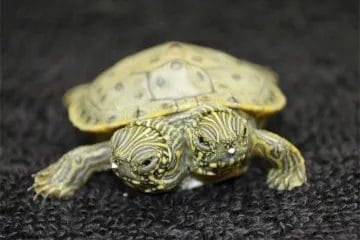
Thelma and Louise:
Thelma and Louise are two-headed red-eared slider turtles born in Texas in 2013 named after the iconic movie characters. They gained widespread attention and were displayed at the San Antonio Zoo, drawing large crowds eager to see this rare phenomenon.

Lucky and Peewee:
These two-headed turtles were born in 2005 at a private turtle farm in Nebraska. They gained media attention and were featured on various news outlets and television programs, highlighting the curiosity and fascination surrounding bicephalic turtles.

Kumbuka and Mkia:
These two-headed African-spurred tortoises were born at the Venice Beach Freakshow in California in 2012. The unusual pair became popular attractions, and their unique condition was showcased to educate the public about genetic anomalies in reptiles.
Cultural Impact
Mythology and Folklore:
Two-headed animals, including turtles, have been woven into myths and folklore in various cultures. In some traditions, they are seen as symbols of duality, balance, or even portents of significant events. For example, in Chinese mythology, two-headed creatures were sometimes considered auspicious, foretelling prosperity or change.
Modern Media and Popular Culture:
In contemporary times, two-headed turtles have appeared in documentaries, news stories, and even social media, sparking interest and curiosity worldwide. They often serve as ambassadors for discussions on genetic diversity and the wonders of natural anomalies.
Life and Challenges of Two-Headed Turtles
Two-headed turtles, while fascinating and rare, face numerous challenges throughout their lives. These challenges affect their daily activities, health, and overall survival.
Understanding the life and difficulties of these unique creatures provides insight into their extraordinary existence.
Daily Life
Behavioral Dynamics:
Two-headed turtles often exhibit intriguing behaviors due to their dual brains. Each head may have its own distinct personality and preferences, which can sometimes lead to conflicts.
For example, one head may want to go in one direction while the other prefers a different path, causing coordination issues.
Feeding and Nutrition:
Feeding can be complex for two-headed turtles. Each head may try to eat simultaneously, leading to competition for food. Caretakers often need to feed them separately to ensure both heads receive adequate nutrition.
Additionally, if one head is more dominant, it might consume more food, leading to imbalances.
Movement and Mobility:
The coordination between two heads can impact the turtle’s mobility. Disagreements between the heads on direction can cause erratic movements.
This lack of coordination makes it challenging for them to navigate their environment efficiently, affecting their ability to find food and avoid predators in the wild.
Health Challenges
Physical Health:
Two-headed turtles are more prone to health issues compared to their single-headed counterparts. They may experience complications such as spinal deformities, respiratory problems, and difficulties with their internal organs due to the abnormal body structure.
Infections and Injuries:
The presence of two heads can increase the risk of injuries and infections. If one head becomes injured or ill, it can affect the overall health of the turtle. Close monitoring and prompt veterinary care are essential to manage and prevent these health issues.
Shorter Lifespan:
Due to the numerous health challenges they face, two-headed turtles often have shorter lifespans than normal turtles. Many do not survive beyond a few months or years. However, with proper care in captivity, some have lived longer, defying the odds.
Survival Rate
Wild vs. Captivity:
In the wild, the survival rate of two-headed turtles is extremely low. Their lack of coordination and increased vulnerability to predators make it difficult for them to thrive.
In captivity, however, they have a better chance of survival due to controlled environments and dedicated care from humans.
Selective Breeding and Conservation:
Conservationists sometimes take special measures to ensure the survival of two-headed turtles. This includes selective breeding programs, specialized habitats, and constant health monitoring.
These efforts help to extend the lifespan and quality of life for these unique creatures.
Current Research of Two-Headed Turtles
Two-headed turtles, while rare, have garnered significant attention from scientists and conservationists.
Ongoing research aims to understand the genetic and developmental mechanisms behind their condition, while conservation efforts focus on ensuring their well-being and survival.
Here are some of the recent scientific papers on two headed turtles:
A TWO-HEADED GREEN SEA TURTLE (Chelonia mydas) HATCHLING ON SAMANDAÐ BEACH, TURKEY:
In the 2015 nesting season, a two-headed green sea turtle (Chelonia mydas) was found on Samandağ Beach, Turkey. The two heads were anatomically similar and reacted independently to external stimuli.
The carapace scutes exhibited anomalies. Radiography revealed that the spinal column bifurcated near the caudal region. Post-mortem examination showed duplication of the esophagus, stomach, liver, lung, heart, and trachea.
This condition, known as teratodidymus, is a rare occurrence in sea turtles and may be influenced by genetic factors.
A two-headed reptile from the Cretaceous of China
A deformed baby choristoderan reptile from the Lower Cretaceous Yixian Formation in northeastern China has been found. The small skeleton has two heads and two necks, splitting at the shoulder area.
This is the first time this type of malformation, known as axial bifurcation, has been seen in a fossil, although it is well known in living reptiles.
Finding of a two-headed green turtle embryo during nest monitoring in Baa Atoll, Maldives
Green sea turtles are one of the two species of marine turtles that nest in the Maldives. The timing of their nesting varies across the islands.
In this study, researchers monitored sea turtle nesting on Coco Palm Dhuni Kolhu island in Baa Atoll for 12 months. They confirmed 13 nests with a median hatching success rate of 89.58%, determined by examining the nests.
In one nest, they found a severely deformed hatchling with two heads (polycephaly), an opening in the neck area, and a curved spine (lordosis). Detailed investigations with X-rays and a necropsy were conducted.
The findings highlight the importance of regular monitoring and consistent nesting activity for conservation efforts in the Maldives.
Conservation Efforts For Two-Headed Turtles
Specialized Care and Habitats:
Conservationists create specialized habitats for two-headed turtles to ensure they receive the care and environment they need to thrive. T
hese habitats are designed to accommodate their unique needs, such as separate feeding areas for each head and spaces that minimize conflicts between the heads.
Veterinary Care:
Regular veterinary care is essential for the health of two-headed turtles. Conservationists work closely with veterinarians to develop tailored care plans that address the specific health challenges these turtles face, including monitoring for infections, injuries, and other medical conditions.
Public Awareness and Education:
Conservation programs often include public awareness campaigns to educate people about two-headed turtles and the importance of their conservation.
Zoos, aquariums, and museums that house two-headed turtles use these opportunities to teach visitors about genetic diversity, developmental biology, and the challenges faced by these unique creatures.
Ethical Considerations:
Ethical considerations are a significant part of conservation efforts. Conservationists and researchers strive to balance the need for scientific study with the welfare of the turtles.
This includes ensuring that two-headed turtles are not exploited for commercial purposes and that their care prioritizes their health and well-being.

About Author
Muntaseer Rahman started keeping pet turtles back in 2013. He also owns the largest Turtle & Tortoise Facebook community in Bangladesh. These days he is mostly active on Facebook.

